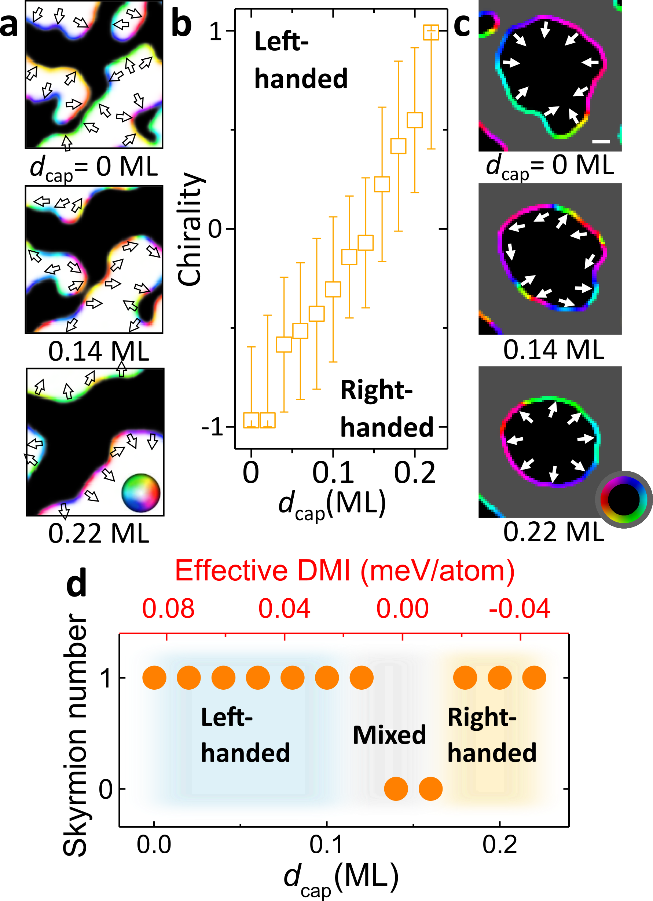Experimental test of the topological stability of magnetic skyrmions
Magnetic skyrmions are bubble-like topological spin textures with promising applications in energy-efficient spintronic devices. Skyrmions are generally considered as being topologically protected, due to its fixed chirality. Its topological stability, i.e., whether a skyrmion’s topological status may remain the same while the driving force of the chirality varies, has been rarely explored experimentally. In a study just published in Nano Letters, Prof. Kai Liu’s group and collaborators, led by Dr. Gong Chen, have observed a topological evolution of skyrmions during the chirality switching from one handedness to the other.
Using the spin-polarized low-energy electron microscopy (SPLEEM) facility at the Molecular Foundry of the Lawrence Berkeley Laboratory (LBL), the researchers observed an ultrasensitive chirality switching in (Ni/Co)n multilayer induced by capping only 0.22 monolayer of Palladium. They find that the topological number in skyrmions varies during such chirality switching, showing the evidence for the instability of the skyrmion topological protection in the zero limit of the chirality driving force.
Using SPLEEM for vector mapping of magnetic structures at nanometer scale, the team has monitored the gradual evolution of domain walls from left-handed to right-handed Néel walls during the chirality switching, and subsequently quantify the driving force of the chirality induced by the Palladium capping layer. This allows the estimation of the energy cost of the complete chirality switching as < 1 attojoule.
This sub-attojoule energy cost associated with skyrmion chirality switching, or “writing”, near the zero point of the chirality driving force is attractive for energy-efficient skyrmionic devices. In particular, chirality-dependent domain wall type may strongly affect the current-driven dynamics of skyrmions. Moreover, chirality driving force dependent topological number observed in this work is relevant to the control of topological properties of skyrmions, e.g. skyrmion Hall effect or topological Hall effect.
Other researchers involved include Prof. Gen Yin at Georgetown University, Colin Ophus and Andreas Schmid at LBL, Roberto Lo Conte, Roland Wiesendanger at University of Hamburg.
This project was supported in part by the National Science Foundation as well as the Spintronic Materials for Advanced InfoRmation Technologies (SMART) Center sponsored by the Semiconductor Research Corporation and the National Institute of Standards and Technology. The SPLEEM facility was supported by the Department of Energy.

